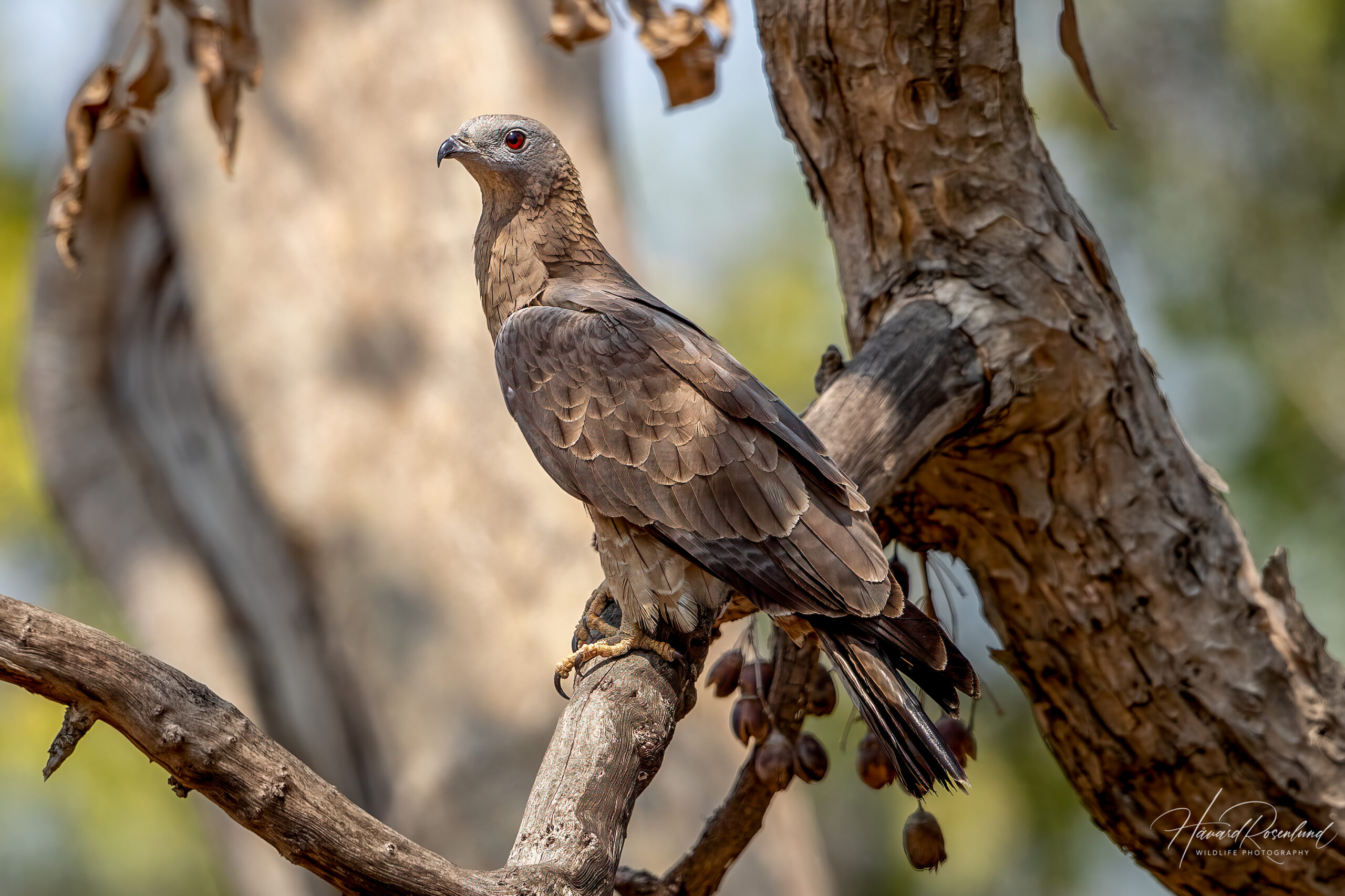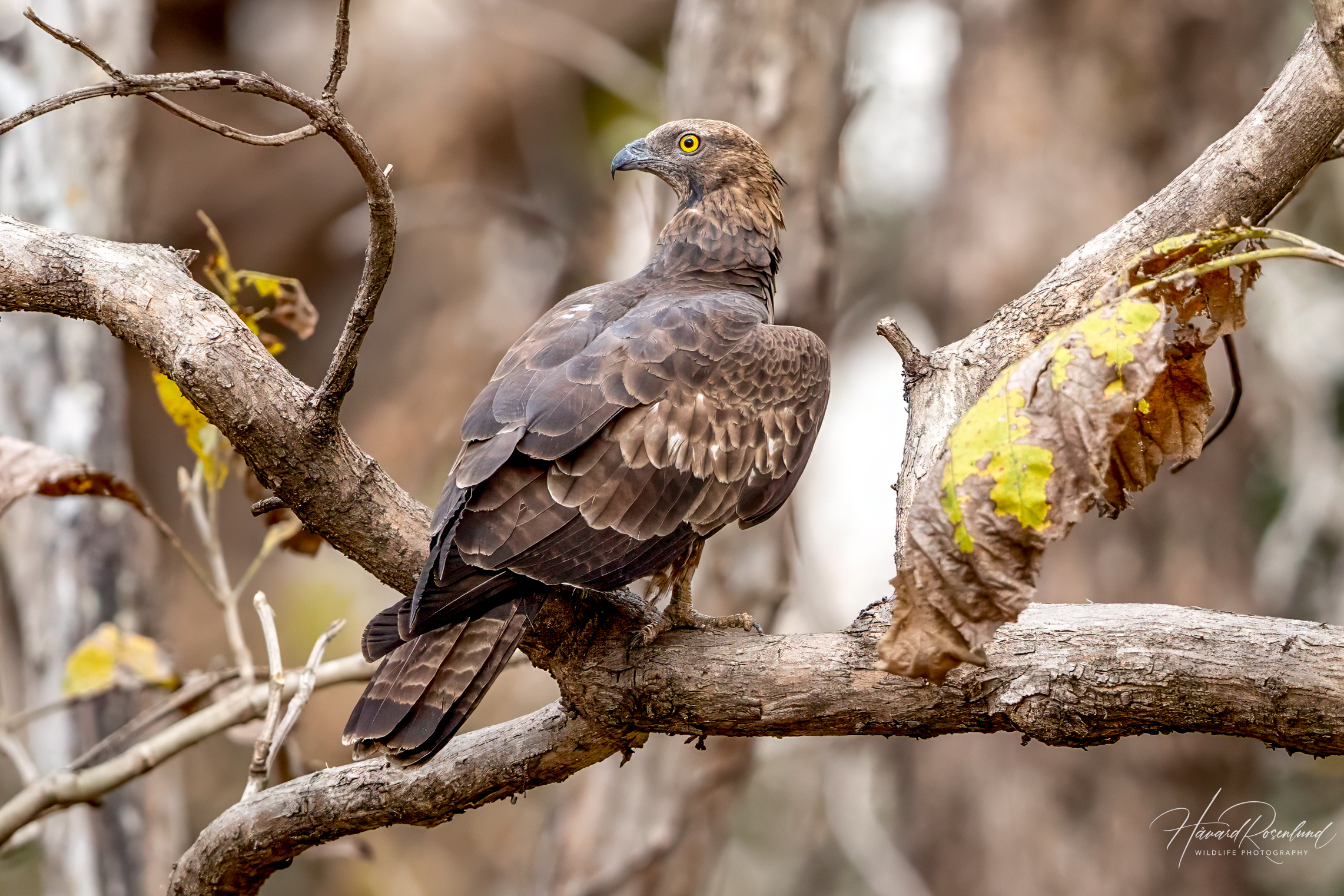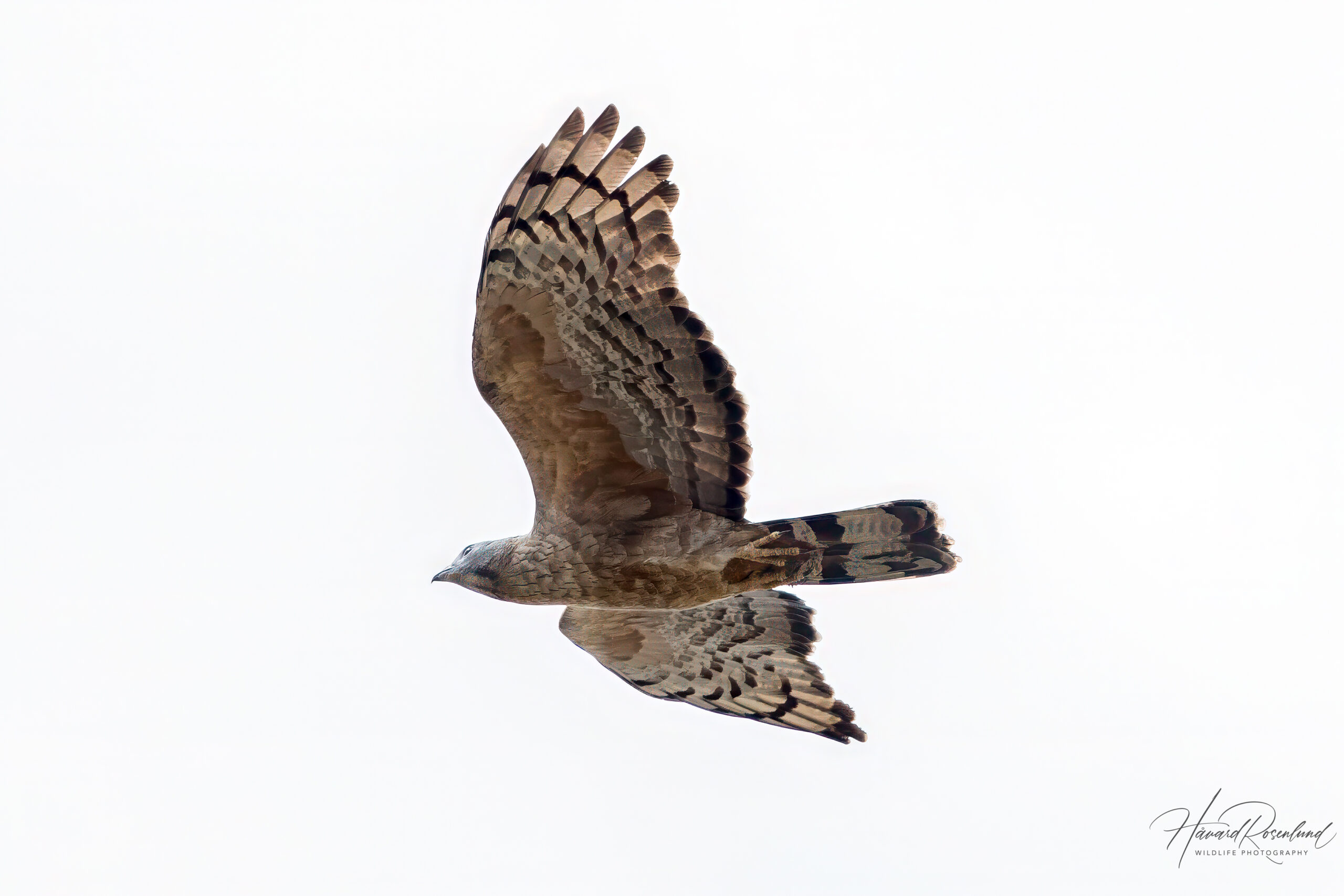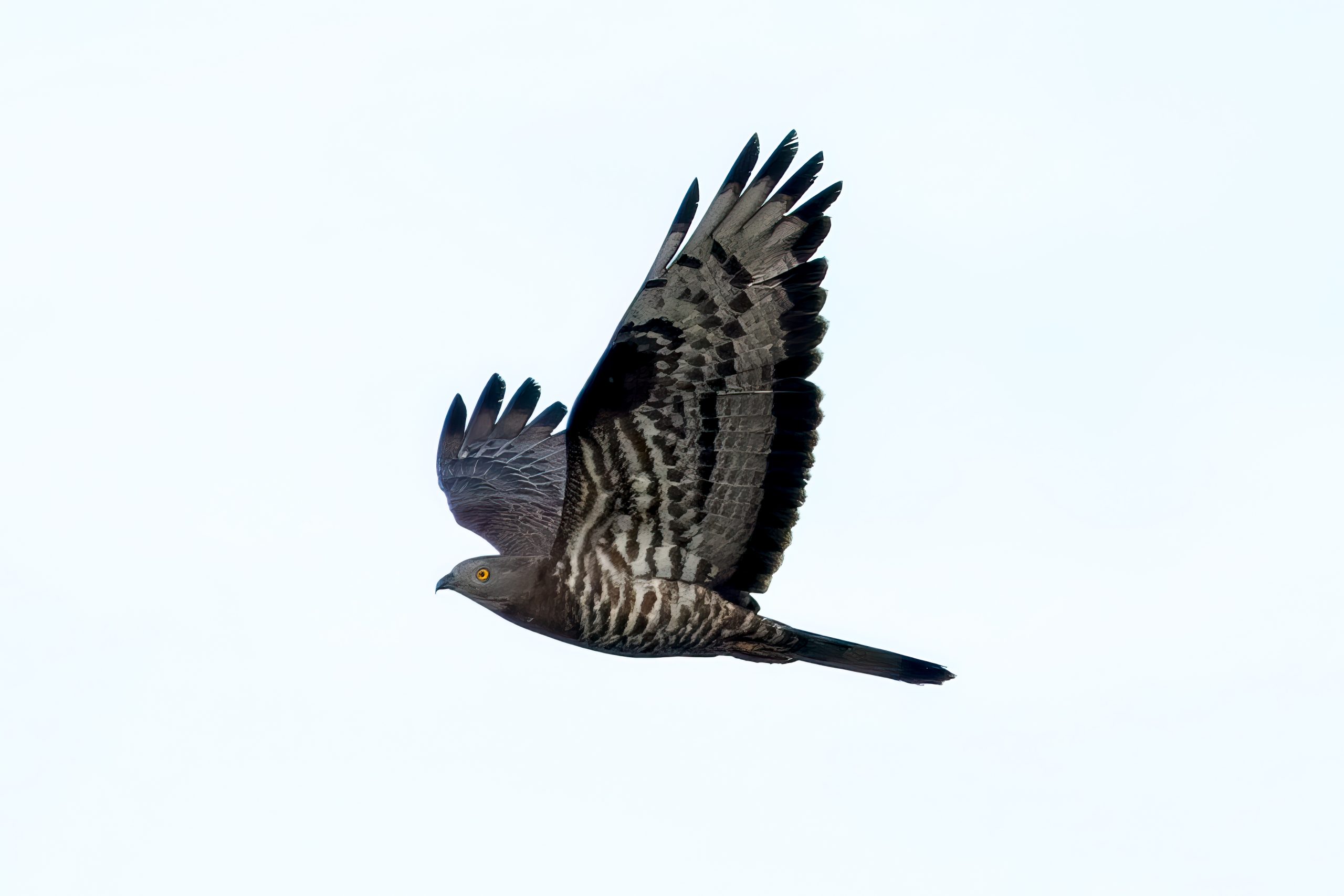Oriental Honey-Buzzard
(Pernis ptilorhynchus)
Description
The Oriental honey-buzzard (Pernis ptilorhynchus), also known as crested honey-buzzard, is a medium to large bird of prey found across Asia, extending from the Russian Far East and Japan through to Southeast Asia and the Indian subcontinent. It measures approximately 52 to 72 cm in length (20-28 in), with a wingspan ranging from 120 to 150 cm (47-59 in). Males are typically smaller than females. This species exhibits sexual dimorphism, with males having a grey head and females a brown head, though variations exist. Its plumage varies considerably, ranging from dark brown to light grey. Many individuals have a small crest at the back of the head and a black throat-stripe.
Diet & habitat
Oriental honey-buzzards are primarily found in forests and woodland areas. They mainly consume wasps and bees, particularly their larvae, which they skillfully extract from nests using their long claws and beak They will also eat bits of comb and honey. Honey-buzzards have a remarkable ability to tolerate the stings of wasps and bees, thanks to a developed immunity to their venom. Aside from insects, their diet may include small mammals, reptiles, birds, and occasionally fruits.
Migration
This species is known for its long migratory patterns, with northern breeding populations traveling south to tropical regions of Asia to overwinter. Migration peaks occur in spring and autumn, with birds often seen soaring at high altitudes on thermals. The routes and behaviors during migration highlight the bird’s strong dependence on thermal uplifts to cover large distances. Most populations that breed in South and Southeastern Asia are not migratory and stay in their territories year-round.
Nesting
Breeding occurs once a year. The breeding season varies by geographical region, with the availability of wasps and bees being particularly important. Oriental honey-buzzards perform intricate aerial displays to attract mates, involving a series of dives and ascents. These birds are solitary nesters, choosing tall trees in dense forests to build their nests, which are constructed from twigs and lined with softer materials. The female typically lays 1 to 3 eggs, which are incubated for about 30 to 35 days. Both parents participate in feeding the fledglings, which leave the nest after approximately 40 to 50 days, showcasing a strong family bonding until the young are independent.
Status
The Oriental honey-buzzard is classified as least concern on the IUCN Red List, reflecting its wide distribution and large population size. However, numbers are believed to be decreasing across its range, mainly due to the loss of suitable forest habitats. The development of wind farms may also pose as threats.







